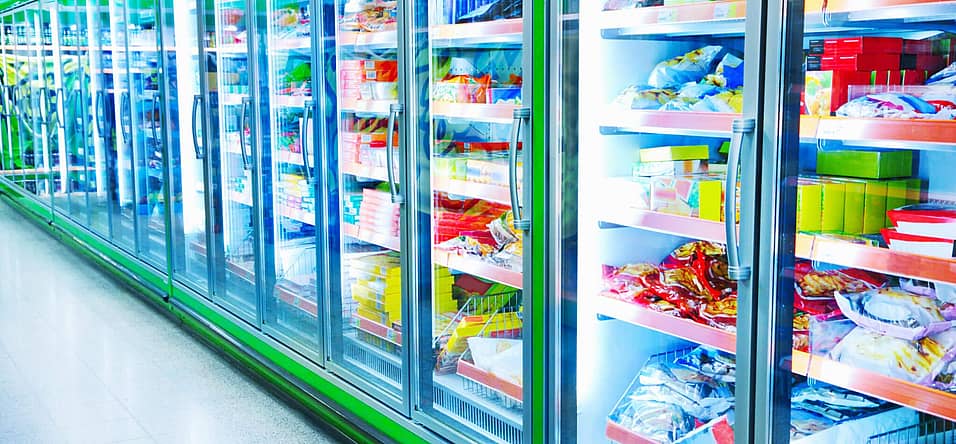
National Frozen Food Day
From crispy fries to creamy treats, frozen food offers a convenient culinary adventure, ready to satisfy cravings at a moment's notice.
Frozen foods, available at grocery stores, have been a creation over the past century, but does anyone know who started it and why? For those curious about what’s so great about frozen foods, a day has been created in honor of them: National Frozen Food Day. It’s a day to learn more about the history of frozen foods and also possibly enjoy some tasty, healthy foods that come from the freezer section!
History of National Frozen Food Day
Frozen foods have been around for a while, and many people were involved in the development of the safe food freezing processes of the modern-day. Because it takes more to freeze food safely than simply sticking it on ice!
Originally, the slower processes of freezing food caused large ice crystals to form that would ultimately degrade the quality, flavor, and texture of the food. In the mid-1920s when several scientists were searching for better processes, faster processes changed everything.
Clarence Frank Birdseye II, a biologist for the US government, set up Birdseye Seafoods and developed the quick-freezing process that included specialized pre-packaging. After earning the first frozen foods freezing process patent in the United States in 1927, Clarence Birdseye created the Birdseye company. He and his company are now considered to be some of the founders of the frozen food industry.
Frozen foods, no matter how conveniently prepared, at that time would still have been heated within the traditional oven, which was time-consuming. It wasn’t until the early 1940-50s that faster, easier heating options would begin to come into play.
In 1945, the microwave was accidentally discovered by Percy Spencer, an American self-taught engineer. After this, the scientific concept was bought and patented by Raytheon for Spencer’s microwave cooking process.
During this same era, TV dinners were developed in the US and, in 1950, began to be sold by the Swanson company, which became the first frozen food dinner to be highly successful.
Once microwaves became accessible to the general public throughout the ’70s and ’80s, US President Ronald Reagan memorialized frozen foods by proclaiming National Frozen Food Day as a U.S holiday in 1984!
Back in these times, grocery stores may have only dedicated one small section of their selling floor to frozen foods. Today, however, stores often make room for several aisles of frozen foods from various companies that allow consumers to reheat readily made foods in under 30 minutes.
Today, organizations such as the National Frozen & Refrigerated Foods Association (NFRA) in the United States celebrate the day. National Frozen Food Day is meant to bring to light the benefits that frozen foods can have towards saving money and bringing families together for a meal.
How to Celebrate National Frozen Food Day
A unique day to be sure, the celebration of National Frozen Food Day offers an interesting chance to learn new things about the history, and also to simply enjoy the convenience that frozen foods bring to modern lives.
Consider these ideas for making National Frozen Food Day fun and fulfilling one:
Take a Trip to the Grocery Store
Celebrate National Frozen Food Day by looking around in the frozen foods section at a nearby grocery store or supermarket. The larger the store, the bigger the frozen food section is likely to be! Today, many brands and product lines have put their innovation to work to produce new healthy lines of frozen foods, paying attention to dietary habits and nutrition requirements. This has given way to many other alternative options such as gluten-free, vegan, non-dairy, etc.
Get Educated on Frozen Foods
Do a bit of research and learn some important facts about the benefits of frozen foods, including:
- Freezing is the best method to preserve food. It keeps the food fresher than other methods, such as canning or drying.
- Frozen foods are picked at the height of ripeness and flash frozen. This means that some of them may actually be more nutritious than “fresh” produce that has traveled for weeks to get to the grocery store. This same concept applies to frozen seafood.
- Nutritious foods can be enjoyed year-round with the use of the freezing process, even in climates where produce does not grow well in the winter months.
- Frozen foods do not require extra preservatives or sodium, making them no less healthy than fresh foods.
Enjoy a Meal with Frozen Foods
Especially during the wintertime, certain types of fresh produce can be more difficult to source, a bit more expensive, and may not last very long at home. Frozen foods are a great workaround for this issue.
A great way to take advantage of frozen foods during the end of the winter months is to combine them with fresh produce that might be in season, and make meals with the family unique, easy and healthy at the same time.
Join in on Frozen Foods Month
The NFRA in the US has declared the entire month of March to celebrate frozen foods! In light of this, the organization often creates campaigns and sweepstakes to raise awareness about the health benefits and convenience of frozen foods.
Be part of the fun by downloading coupons, entering their sweepstakes (up to $10,000 and other grocery prizes!), participating in giveaways or engaging in other activities promoted by this association. Share your ideas for food creations on a favorite social media website using the hashtag #frozenfoodday and let your friends know this day’s all about celebrating your favorite foods in the frozen section.





